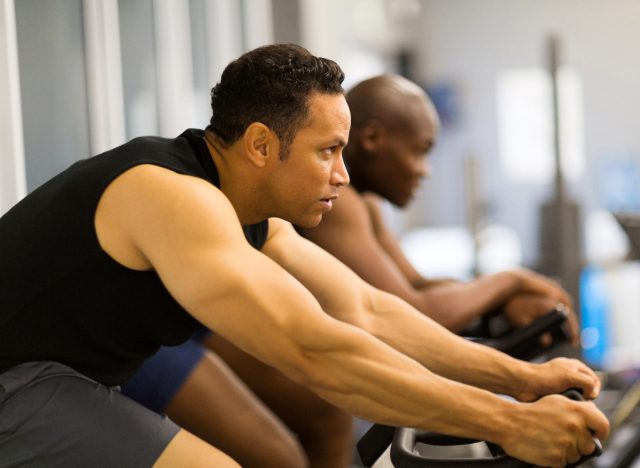Engaging in cardiovascular exercise is fundamental for overall fitness. Making it a regular part of your routine can greatly improve the health of your heart, help you burn calories, and achieve a lean physique. However, what transformations take place in your body from daily cardio sessions? The outcomes vary and are influenced by how long and how intensely you exercise, as well as the type of cardio you engage in. To shed light on this topic, we consulted with a specialist who will explain the potential physical alterations you may experience when incorporating daily cardio into your routine.
Table of Contents
What Happens to Your Body When You Do Cardio Every Day


If Running Is Your Main Form of Cardio:
Assuming you’re brand new to cardio, running is your main activity, and you begin with five to 15 minutes of running, Seth Forman, athletic and sports performance trainer, CSCS at Kayezen Vector, shares what you can expect.
1. Sore Ribs
“The reason for sore ribs is the requirement of the lungs to expand and contract beyond the capacity needed at rest,” explains Forman. “The soreness is perfectly normal and a part of the adaptation process when a new exercise is introduced.”
The good news is that you can run again while you’re feeling sore! According to Forman, this can actually help decrease soreness as you get moving.
2. Sore Shins
The fronts of your shins will likely feel sore as well. “As your foot makes contact with the ground, it does so most commonly with a heel strike,” Forman tells us. “The muscles on the front of your shins need to absorb two to three times the amount when running versus walking. This will make you sore.”
Walking is a stellar form of exercise to aid in the recovery process when your shins are sore.
If Cycling Is Your Main Form of Cardio:
Forman provides another example. If you perform aerobic cycling for 60 minutes three times a week, you may experience the benefits below within the first two months of training.
- Reduction in body weight
- Reduction in body fat
- Improved cholesterol profile
- Improved heart health
“These benefits have been observed in every age group, male and female, for running and cycling,” Forman points out.
How Daily Cardio Impacts Your Overall Cardiovascular Health


“They say consistency is king! Does that mean every day? It depends on what we are talking about,” Forman tells us. “Not all routines need to be performed daily. Aerobic exercise is one of those routines. For example, in groups new to cardio or aerobic exercise, there was no greater benefit from the standpoint of heart health to doing more than three days per week.”
As far as body composition is concerned, there are benefits associated with daily aerobic exercise—until there are not, Forman cautions. “The human body becomes exceptionally efficient at adapting to the demands placed on it, which means, if you run daily, your body will get rid of anything it deems unnecessary to perform the task,” he explains. “In this case, you will get rid of fat and muscle. With a significant reduction in muscle mass, you will burn [fewer] calories at rest, become weaker, increase [the] risk of injury, and increase the risk of damaging your heart.”
It’s important to keep in mind that cardio provides great benefits for your lungs, heart, muscles, brain, and physical appearance. But too much of anything is never a good thing—and cardio is no exception to the rule.





